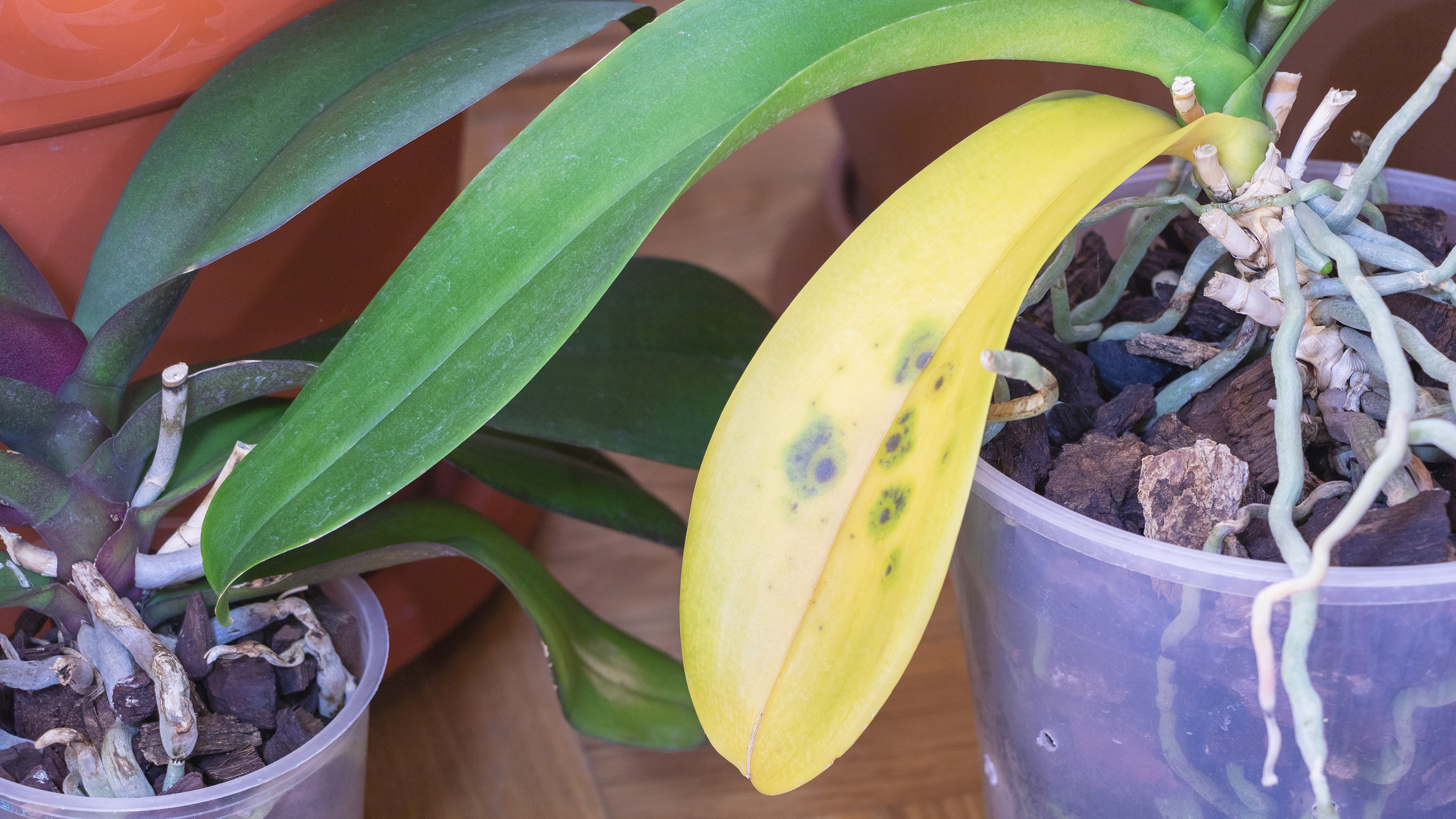Orchid Plant Diseases – Tips On Treating Orchid Diseases
Most common orchid diseases can be prevented or cured, especially if caught early. Just as with pests, it is important to monitor plant health frequently and act immediately. Click here for some information on common orchid diseases and treatment.


The most common diseases of orchid plants are fungal. These might be foliar blights, leaf spots, fungal rots, and flower blights. There is also a bacterial rot which can diminish orchid health.
Determining which disease your plant has is critical to treating orchid diseases. Most common orchid diseases can be prevented or cured, especially if it's caught early. Just as with pests, it is important to monitor plant health frequently and act immediately if any abnormal conditions occur. Read on for some information on common orchid diseases and treatment.
Common Orchid Diseases
Orchids come in many sizes, colors, and growth forms. The majority of these wonderful plants in cultivation come from rainforest areas where temperatures are temperate to tropical.
There are also species that thrive in arid conditions, but these are not widely grown.
Orchid plant diseases are most likely to occur when excess moisture stays on leaves and flowers, and when soil has poor drainage.
Cultural changes and even a site transfer can minimize disease as can good sanitation procedures.
There are numerous fungal diseases that can affect orchids. Keep a close eye on the health of the plants' leaves.
Gardening tips, videos, info and more delivered right to your inbox!
Sign up for the Gardening Know How newsletter today and receive a free copy of our e-book "How to Grow Delicious Tomatoes".
Black rot
Black rot is a fungal disease that forms when there is standing water on the orchid. The fungal spores must swim through water and, once ready, will sprout mycelium and begin fruiting.
Dark black spots form on foliage and spread quickly through all parts of the plant if left unchecked. Avoid splashing water among your plants and cut out any affected areas with a sterile knife.
Root, rhizome and pseudobulb rots
These are prevalent when potting soil is not sterile and there is excess water. This disease is very contagious and is primarily a root disease, but symptoms may be above the ground.
Treating orchid diseases of the roots requires removal of the plant from its medium and using a sterile knife to cut off infected material. Then use a fungicide to drench the roots and clean the growing area with a 10% bleach solution.
If enough roots survived, the plant may regain its health.
Petal blight and southern blight
Petal blight and southern blight, or collar rot, are most prevalent when weather is warm and humidity is high. Poor air circulation and good sanitation can help prevent these diseases.
Southern blight causes rapid collapse and rotting of roots, pseudobulb, and leaves. Eventually, the disease will girdle the plant and destroy it.
Petal blight stems from the fungus Botrytis and produces small black or brown spots on the petals. The flowers will transmit the fungus, so removal of the flower is crucial.
Fungicide and sanitation are key to these orchid diseases and treatment.
Leaf spots
Leaf spots may occur from a variety of organisms. Good sanitation, air circulation, and preventing water on leaves can help prevent these orchid plant diseases.
Bacterial Soft and Brown Rot
Bacterial soft and brown rots are other frequent diseases of orchid plants. The pathogen favors hot, moist conditions and is spread by splashing water on leaves. Leaves develop water-soaked areas often with yellow halos.
Quickly, the disease spreads to the roots and pseudobulb. The rotten areas may have an unpleasant odor.
In as little as two days, the virus can rot the extremely sensitive Phalaenopsis.
In Vanda, the spots become translucent while in Dendrobium, the patches become black and sunken.
Use sterile tools to remove infected material. Copper fungicides may be used except on Dendrobium and during flowering or you can use hydrogen peroxide.
Simply spray hydrogen peroxide on the plant and any neighboring plants, as the infection can spread quickly.

Bonnie Grant is a professional landscaper with a Certification in Urban Gardening. She has been gardening and writing for 15 years. A former professional chef, she has a passion for edible landscaping.
-
 Looking For Plants To Give You The Soft And Fuzzies? Try These 5 Fuzzy Leaf Plant Options
Looking For Plants To Give You The Soft And Fuzzies? Try These 5 Fuzzy Leaf Plant OptionsLovers of texture, drama, silver foliage and tactile plants will adore these special sensory garden additions. These fuzzy leaf plant options will leave you all aglow
By Susan Albert
-
 Get Ready For A Summer Of Hummers! Grow These Full Sun Hummingbird Plants and Flowers
Get Ready For A Summer Of Hummers! Grow These Full Sun Hummingbird Plants and FlowersIf you’re lucky enough to enjoy a sunny backyard, make sure you are maxing out on your pollinator opportunities and grow these full sun hummingbird plants and flowers
By Tonya Barnett